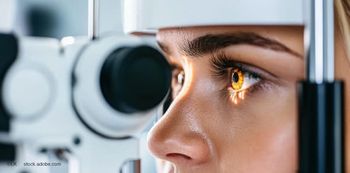
Prevent Blindness declares June as Cataract Month
Key Takeaways
- Prevent Blindness provides educational resources on cataracts, including fact sheets, social media graphics, and a dedicated web page, available in English and Spanish.
- Cataracts are the leading cause of vision loss in the US, affecting over half of Americans aged 80 and older.
Prevent Blindness offers resources for Cataract Month, empowering patients and caregivers with knowledge on cataracts and surgery options.
Prevent Blindess has declared June as Cataract Month to provide patients, care partners, and health professionals with free educational resources on cataract.1
The organization is providing resources on cataract that include fact sheets, social media graphics, a dedicated web page with cataract information, a video from the Focus on Eye Health Expert series, and a list of financial assistance resources available in English and Spanish.
“A cataract is a clouding of the eye’s lens, which blocks or changes the passage of light into the eye,” a press release stated.
Cataract is the leading cause of vision loss in the US, and more than half of Americans aged 80 and older have cataract or have had surgery to remove cataract. According to Prevent Blindness,
During cataract surgery, an eye surgeon removes the eye’s cloudy natural lens and replaces it with an artificial lens––an intraocular lens (IOL). Prevent Blindness offers a
Worldwide, cataract is the leading cause of blindness. Causes of cataract include aging, eye infections, some medications (such as steroids), eye injuries, exposure to intense heat or radiation, too much exposure to nonvisible sunlight (UV light), and various diseases such as diabetes or metabolic disorders.
“We know with age, the likelihood of developing cataract increases,” said Jeff Todd, president and CEO of Prevent Blindness. “We encourage everyone to be proactive about their eye health, including getting regular eye care and talking to your eye care professional about cataract risks and what steps you can take to protect your vision today and for tomorrow.”
Reference
1. Prevent Blindness provides educational resources for Cataract Month. Prevent Blindness. May 28, 2025. Accessed June 2, 2025. https://preventblindness.org/2025-cataract-month/
Newsletter
Don’t miss out—get Ophthalmology Times updates on the latest clinical advancements and expert interviews, straight to your inbox.













































.png)


